Like many golfers, I was watching the Ryder Cup at Whistling Straits and thinking to myself ‘this course looks amazing.’ But unlike many golfers, I’m from a state that borders Wisconsin, have played many of Wisconsin’s best courses, but have never played Whistling Straits. So I was also saying to myself, ‘why haven’t I played there yet?’ I knew that I’d have to be in Michigan (I live in DC) during the middle of October so the day after the Ryder Cup, I thought—being skeptical of success—that I’d give them a call and see if I could get some tee times. I called the day after and to my surprise (1) I was able to get through and (2) I was able to get some tee times. So I was off to play a course that I probably should have played several years ago.
But as I think most golfers know, there are two courses at Whistling Straits, the Ryder-Cup-hosting Straits Course which occupies all of the best land along the shoreline and the inland Irish Course. The plan here was clearly to have one standout course and one ‘other’ course, but the Irish has been shaped in much the same spirit as the Straits and lake views aside, there’s often a similar look and feel. Both courses are heavily shaped to give them (I guess; I haven’t been) an ‘Irish dunes’ feel although perhaps because it was built on a flat piece of farmland and all that dirt had to come from somewhere, there’s more water on the Irish course. It feels more like a standard Pete Dye course than the Straits.
Now that I’ve played somewhere around a dozen Pete Dye courses, I’m starting to realize that there was a spectrum in his design style as far as shaping from subdued, like Radrick Farms in Michigan or much of the Meadow Valleys next door at Blackwolf Run, to extreme. At this end we find courses like the Dye Course at the Barefoot Resort in Myrtle Beach and Whistling Straits. While all of his course generate a lot of strategy in the placement of hazards, courses in the latter category have a lot of shaping between the holes, creating this faux dunes look.
I definitely prefer the courses in the former category. While the Irish has a lot of good holes and I appreciate that they were trying to create a consistent style across the two Whistling Straits courses and different from the two courses at Blackwolf Run, but the Irish just feels overdone too me. There’s plenty of width out there (certainly more than on the Straits), but there’s also a lot of awkwardness, with it being unclear where to hit several shots. And there’s just a lot more created severity than necessary. I’ve never played a Pete Dye course that suffered from being too easy, but several that suffered from the opposite.
Now I had to play the Irish Course because I hadn’t played it and needed to check the box. But it was probably my least favorite of the four Kohler courses and save for a heavy discount, I probably wouldn’t play it again.
The first hole is a mid-length par 4 running gradually up a hill to a green that’s on a diagonal from front-right to back-left. Although it had been three weeks, there was still Ryder Cup infrastructure on the course and we were limited to the 275 yard forward tee, making this an interesting driveable par 4. I’d like the original version more as an opening hole, but this version works and I would imagine plays similarly for someone who drives the ball 160 yards as the full version does for the rest of us.
But as I think most golfers know, there are two courses at Whistling Straits, the Ryder-Cup-hosting Straits Course which occupies all of the best land along the shoreline and the inland Irish Course. The plan here was clearly to have one standout course and one ‘other’ course, but the Irish has been shaped in much the same spirit as the Straits and lake views aside, there’s often a similar look and feel. Both courses are heavily shaped to give them (I guess; I haven’t been) an ‘Irish dunes’ feel although perhaps because it was built on a flat piece of farmland and all that dirt had to come from somewhere, there’s more water on the Irish course. It feels more like a standard Pete Dye course than the Straits.
Now that I’ve played somewhere around a dozen Pete Dye courses, I’m starting to realize that there was a spectrum in his design style as far as shaping from subdued, like Radrick Farms in Michigan or much of the Meadow Valleys next door at Blackwolf Run, to extreme. At this end we find courses like the Dye Course at the Barefoot Resort in Myrtle Beach and Whistling Straits. While all of his course generate a lot of strategy in the placement of hazards, courses in the latter category have a lot of shaping between the holes, creating this faux dunes look.
I definitely prefer the courses in the former category. While the Irish has a lot of good holes and I appreciate that they were trying to create a consistent style across the two Whistling Straits courses and different from the two courses at Blackwolf Run, but the Irish just feels overdone too me. There’s plenty of width out there (certainly more than on the Straits), but there’s also a lot of awkwardness, with it being unclear where to hit several shots. And there’s just a lot more created severity than necessary. I’ve never played a Pete Dye course that suffered from being too easy, but several that suffered from the opposite.
Now I had to play the Irish Course because I hadn’t played it and needed to check the box. But it was probably my least favorite of the four Kohler courses and save for a heavy discount, I probably wouldn’t play it again.
The first hole is a mid-length par 4 running gradually up a hill to a green that’s on a diagonal from front-right to back-left. Although it had been three weeks, there was still Ryder Cup infrastructure on the course and we were limited to the 275 yard forward tee, making this an interesting driveable par 4. I’d like the original version more as an opening hole, but this version works and I would imagine plays similarly for someone who drives the ball 160 yards as the full version does for the rest of us.
Two is a very Pete Dye short par 4 with water up the left side and a shallow green that angles from front-left to back-right. Dye is always good a generating strategy—lay up on the dangerous left side for the best angle—but when you play a lot of his courses, you realize that it’s usually the same idea, just with somewhat different features…but usually a pond.
Three is a another Dye water par 3 although I like the steep-faced bunker in front of the green. You find this kind of shaping on the Blackwolf Run courses and a lot of it over there reminds me of Langford.
Four is the standard S-shaped long par 4, going around a big bunker on the left with the drive, then one on the right with the approach. Interesting, but standard stuff for Dye. The one thing that I like about this hole is that the fairway really narrows in the driving zone, so the optimal drive is not just a matter of taking on the risk of skirting the bunker, but also staying within the narrowing margin on the right.
The par 5 fifth hole reminds me of the notorious fifth hole next door. This is not a good thing. We have a similar drive skirting a feature that cuts into the fairway on the right, but at least this time it’s a bunker, not a pond. You need to be fairly close to the bunker because if you’re not, it’s difficult to carry the junk that cuts off the fairway ~90-140 yards from the middle of the green. Again, there’s certainly strategy here although it’s a tough carry to a narrow landing area for most and if you can’t carry, the layup area narrows and is kind-of blind.
I like the look of the short par 3 sixth but I guess, running out of ideas, Dye just decided to surround this narrow green with sand. Still, a good short par 3.
Seven is also a good short par 4 where a drive up the right side short of the bunker (~240) will leave you a look down the angle of the green. This is one hole where the heavy shaping around the fairways bothered me because it didn’t blend well with the forest setting.
Apparently I forgot to get a picture of the drive on the par 5 eighth, but it’s fairly narrow and awkward, with waste bunkers up the right. We have another awkward carry to a narrow layup area here. This one shouldn’t be too difficult for good players if they’ve hit a decent drive but is killer for high handicaps because again, there isn’t a lot of room on either side.
The ~390 yard ninth is a bit better because while it’s an interesting hole in its own right, it’s also a bit different for this course because the shaping is much more subdued. A winding creek bisects a very wide double fairway. The right side shouldn’t be a difficult carry if you’re playing the correct tees but the carrying left side demands a good hit. While there’s ample fairway to the right, the further right you go, the worse your angle into the narrow green and the more likely it is that you’ll be blocked by trees. Not too hard a hole, but interesting.
The tenth hole is next to and reminds me of the tenth next door; an uphill short par 4 that bends slightly to the left. Like that green and many here, this one is narrow but deep.
I thought that the par 3 eleventh was the most aesthetically effective heavily-shaped hole on the course. It's the one hole where the fake dunes start to look realistic. The hole is very similar in principle to the seventh next door, with a hazard on the right (this time a bunker rather than Lake Michigan) and a hill left that you can use to kick your ball onto the green. This hole would fit in very well next door.
Twelve is a not-particularly-interesting mid-length par 4 notable to me for one thing: the bold shaping at the front-left of the green reminds me of something that you’d see on a Langford course.
The par 3 thirteenth is a mess. The hole is in the wetlands, yet Dye decided to build some of the biggest mounds on the property and a wild ~15,000 sq. ft. green that you can only see about half of from the tee. Apparently there’s also an upper set of tees from where the hole is downhill, yet blind. Definitely a ? hole.
We’re back to more normal golf on the par 5 fourteenth, where the shaping is much more subdued and looks good. It’s another Dye template on the approach, this time the carry-a-diagonal-creek-to-a-high-landing-area-on-the-left-and-a-left-to-right-angled-green template. There’s a very similar hole at Bulle Rock in Maryland but this one works a bit better because the land is flatter.
The long par 4 fifteenth is another Dye template, with diagonal junk up the right and a hill up the left. It’s a good driving hole and you’ll need a good one here to have a decent length approach into the deep, narrow green that angles from front-left to back-right. Listen to your forecaddie and aim a little left and take one club less because the back bunkers aren’t great (as I learned).
Sixteen is another tough, long par 4, this time not any Dye template that I’m aware of. The drive is uphill and a bit narrow between a bunker (and hidden pond) left and a hill of sheit on the right. The look into the green is nice, with minimal intrusive shaping. Again, the green is narrow and deep, but this time there’s ample room to run the ball in.
Seventeen is a Dye pond short par 4 that was especially tough into a ~15 mph. wind on this day. There’s some nice shaping on and in front of the green but otherwise, the hole is pretty tedious.
While we drive over a pond on the par 5 eighteenth, it shouldn’t be too difficult to carry from the correct set of tees. The bigger issue here is keeping your drive up the left so that you have a clearer view over another creek to the green.
The approach here might be the best-looking shot on the course. The green is built-up and has another Langford-looking edge on the left side. While again there’s a creek crossing in the layup area, there’s ample room on both sides. This hole reminded me more of Blackwolf Run than the rest of the Irish course and it was easily my favorite par 5.
Dye courses are difficult to rate because most seem to employ the same strategy-generating elements. Because of the similarity, I think that the order in which you see them matters for personal preference. Arguably it should also matter for how you rate them; originality is important and a piece of work in which you do something great for the first time deserves more acclaim than another in which you do that same thing for the 20th time.
If I had never played a Dye course before, I probably would have liked the Irish a lot more because it’s very interesting in its own right. But after 6 or 8 courses like this, you start to think ‘yeah, it’s an interesting design style and generates strategy, but couldn’t you do something a bit different once in awhile?’ I don’t often get the feel that I’m seeing something new on these courses and when I do, it’s in a bad way—like the godawful 5th hole next door on the Straits course. It makes me wonder if I’d be unimpressed by TPC Sawgrass because I would have seen a lot of it elsewhere—even though it was the first for many of those templates.
Still, the Irish is a good course. There are several good holes and I thought that there were a few times that the manufactured landscape looked quite good, like on the par 3 eleventh.
But I’ll also reiterate another criticism: the fake dunes shaping doesn’t work well with the forest setting that we encounter several times here. There’s an interesting trade-off between shaping in a consistent way across a course and shaping in a way that fits the setting that you have, which may differ across the course. Dye is much closer to the former here, but I would have preferred the latter. I don’t think that there’d be anything wrong with having holes with fake dunes like 1 and 11 (which are also next to the Straits, where this shaping looks better) when there wasn’t much to work with and then transitioning to the more Langford-style shaping of the River Course or even something more minimal when you have a nice forest setting like 7, 13-14. You get a bit of a different style on 9 and 18, but I would have liked to have seen more of this. There’s something to be said for internal consistency, but different styles can work if you’re careful about the flow between them (Park Jr./Colt blend brilliantly on Sunningdale’s Old Course).
One more point: being the clearly inferior course at Whistling Straits, you’d think that you’d want to use the Irish as a warm-up course. But it’s way too hard for that; I wouldn’t say that it’s much easier than the Straits, only maybe a little bit because the fairways are wider. I’d go the other way with the Irish—play the Straits in the morning and use the Irish as your beer-drinking, golf-ball-losing afternoon round.
Come to think of it, Kohler could really use an easier warm-up course. The first six holes on the Meadow Valleys are perfect for this, but the rest of the course isn’t. Like I said earlier, Pete Dye courses have never suffered for being too easy and it would have been nice if someone else had designed one of these courses. Kohler wants to build a fifth course in a forested state park just south of Sheboygan but while the plans are currently on hold, apparently Dye was slated to build that one too. But now that Dye is gone, hopefully if they build that course—which I’m not sure that they should; it’ll mean tearing up a lot of old forest that’s in short supply in southeastern Wisconsin—they’ll get someone else to do it.
If I had never played a Dye course before, I probably would have liked the Irish a lot more because it’s very interesting in its own right. But after 6 or 8 courses like this, you start to think ‘yeah, it’s an interesting design style and generates strategy, but couldn’t you do something a bit different once in awhile?’ I don’t often get the feel that I’m seeing something new on these courses and when I do, it’s in a bad way—like the godawful 5th hole next door on the Straits course. It makes me wonder if I’d be unimpressed by TPC Sawgrass because I would have seen a lot of it elsewhere—even though it was the first for many of those templates.
Still, the Irish is a good course. There are several good holes and I thought that there were a few times that the manufactured landscape looked quite good, like on the par 3 eleventh.
But I’ll also reiterate another criticism: the fake dunes shaping doesn’t work well with the forest setting that we encounter several times here. There’s an interesting trade-off between shaping in a consistent way across a course and shaping in a way that fits the setting that you have, which may differ across the course. Dye is much closer to the former here, but I would have preferred the latter. I don’t think that there’d be anything wrong with having holes with fake dunes like 1 and 11 (which are also next to the Straits, where this shaping looks better) when there wasn’t much to work with and then transitioning to the more Langford-style shaping of the River Course or even something more minimal when you have a nice forest setting like 7, 13-14. You get a bit of a different style on 9 and 18, but I would have liked to have seen more of this. There’s something to be said for internal consistency, but different styles can work if you’re careful about the flow between them (Park Jr./Colt blend brilliantly on Sunningdale’s Old Course).
One more point: being the clearly inferior course at Whistling Straits, you’d think that you’d want to use the Irish as a warm-up course. But it’s way too hard for that; I wouldn’t say that it’s much easier than the Straits, only maybe a little bit because the fairways are wider. I’d go the other way with the Irish—play the Straits in the morning and use the Irish as your beer-drinking, golf-ball-losing afternoon round.
Come to think of it, Kohler could really use an easier warm-up course. The first six holes on the Meadow Valleys are perfect for this, but the rest of the course isn’t. Like I said earlier, Pete Dye courses have never suffered for being too easy and it would have been nice if someone else had designed one of these courses. Kohler wants to build a fifth course in a forested state park just south of Sheboygan but while the plans are currently on hold, apparently Dye was slated to build that one too. But now that Dye is gone, hopefully if they build that course—which I’m not sure that they should; it’ll mean tearing up a lot of old forest that’s in short supply in southeastern Wisconsin—they’ll get someone else to do it.
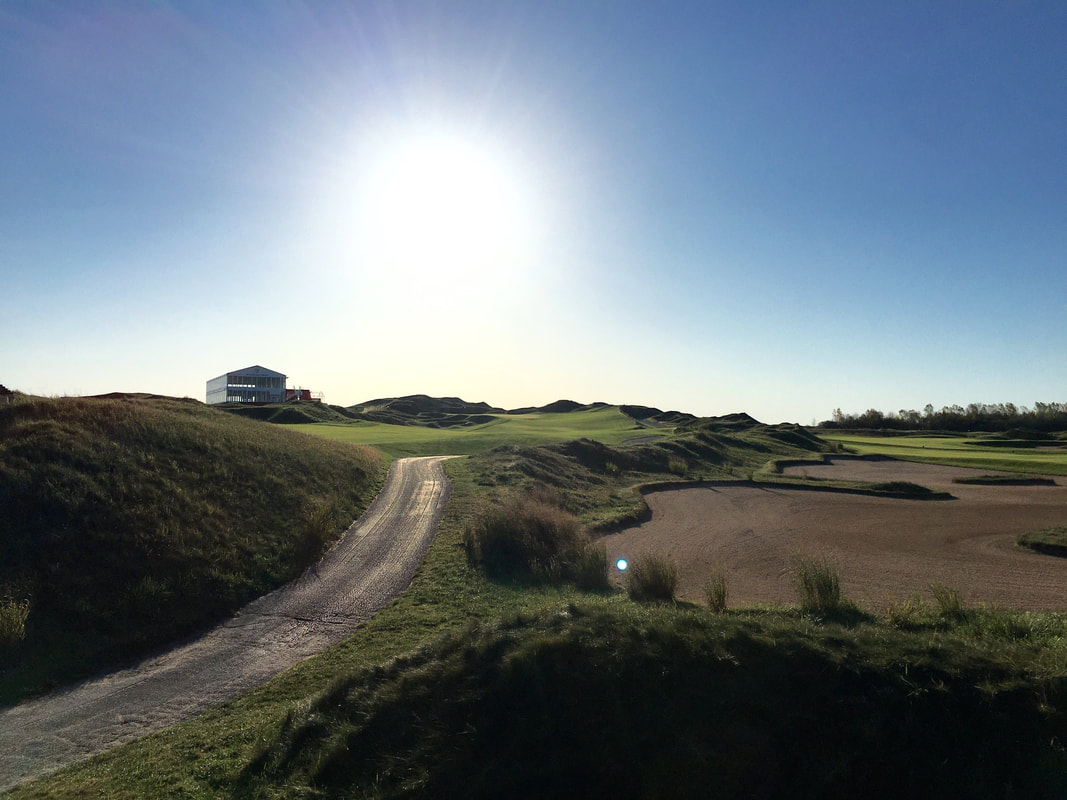
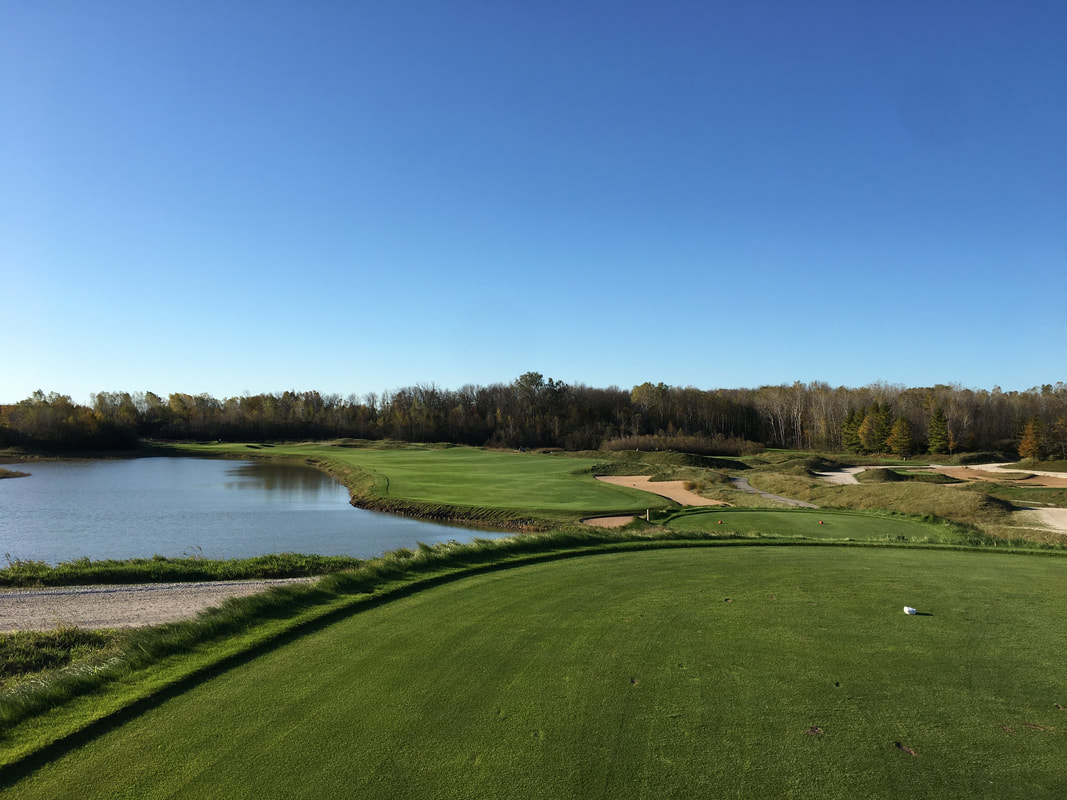
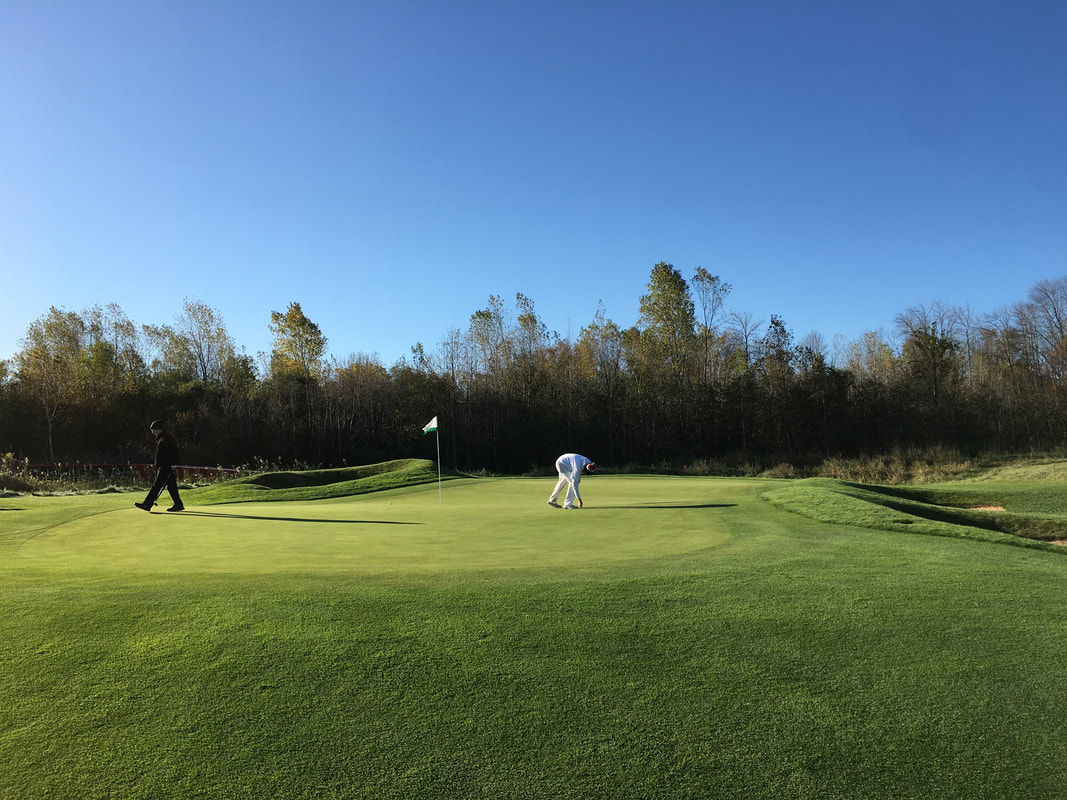


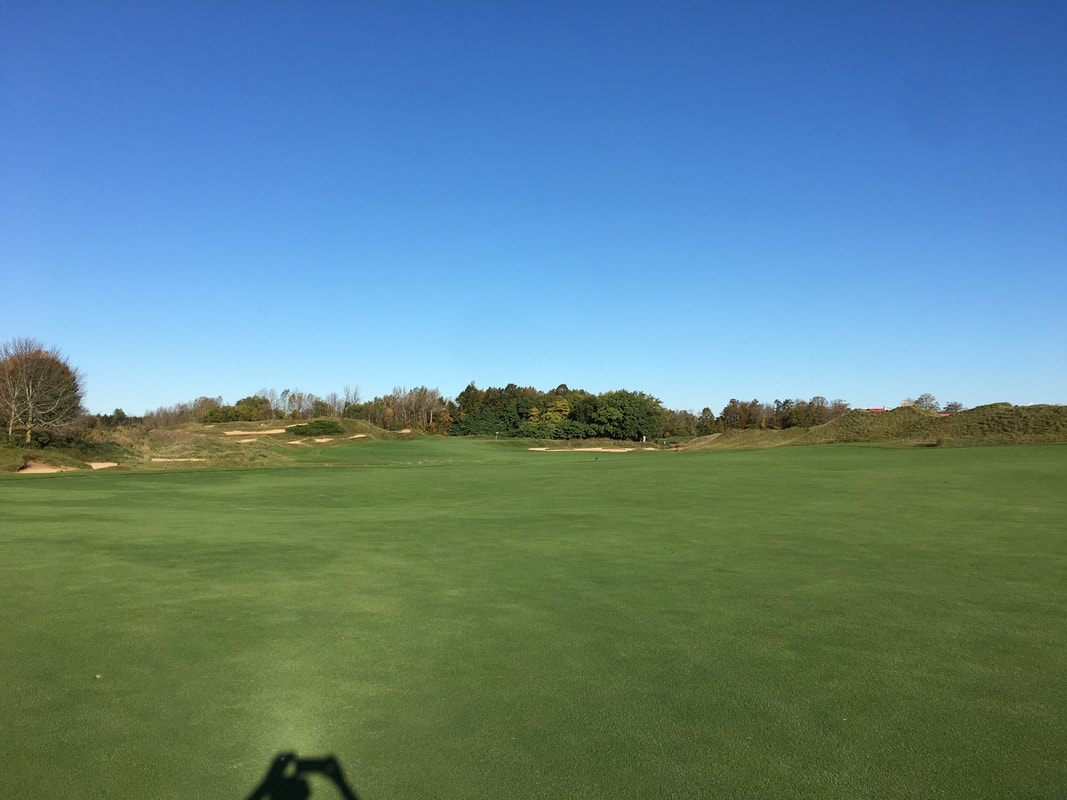


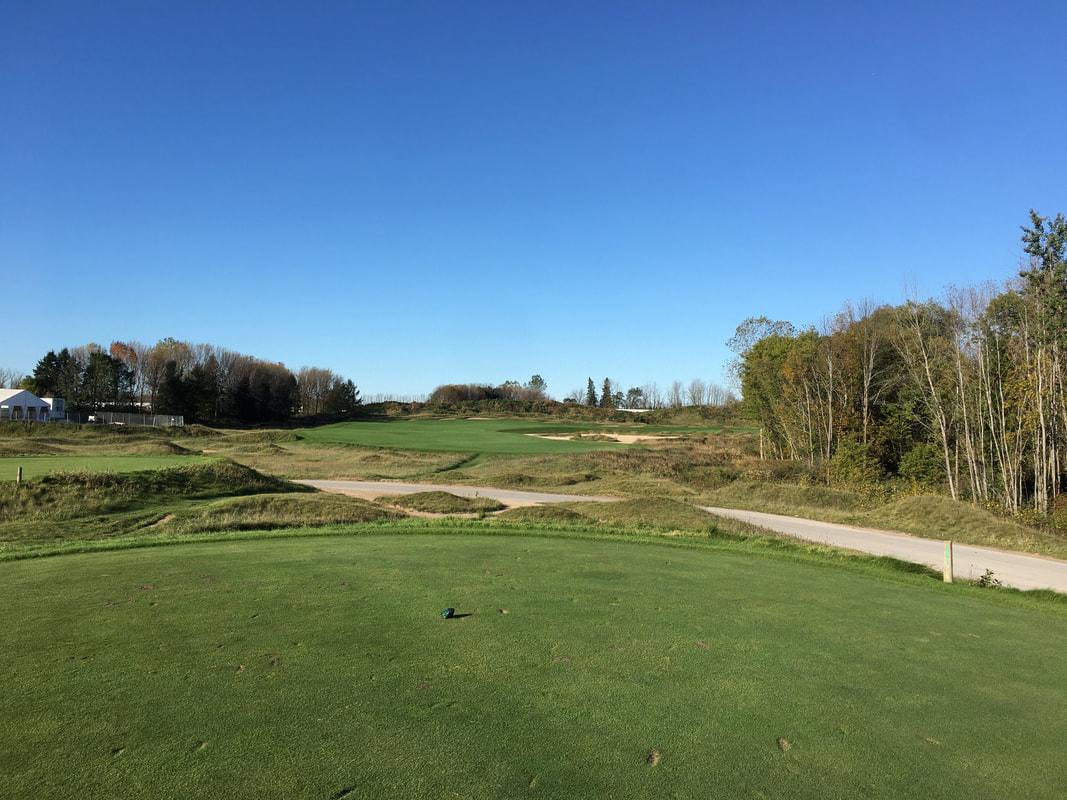
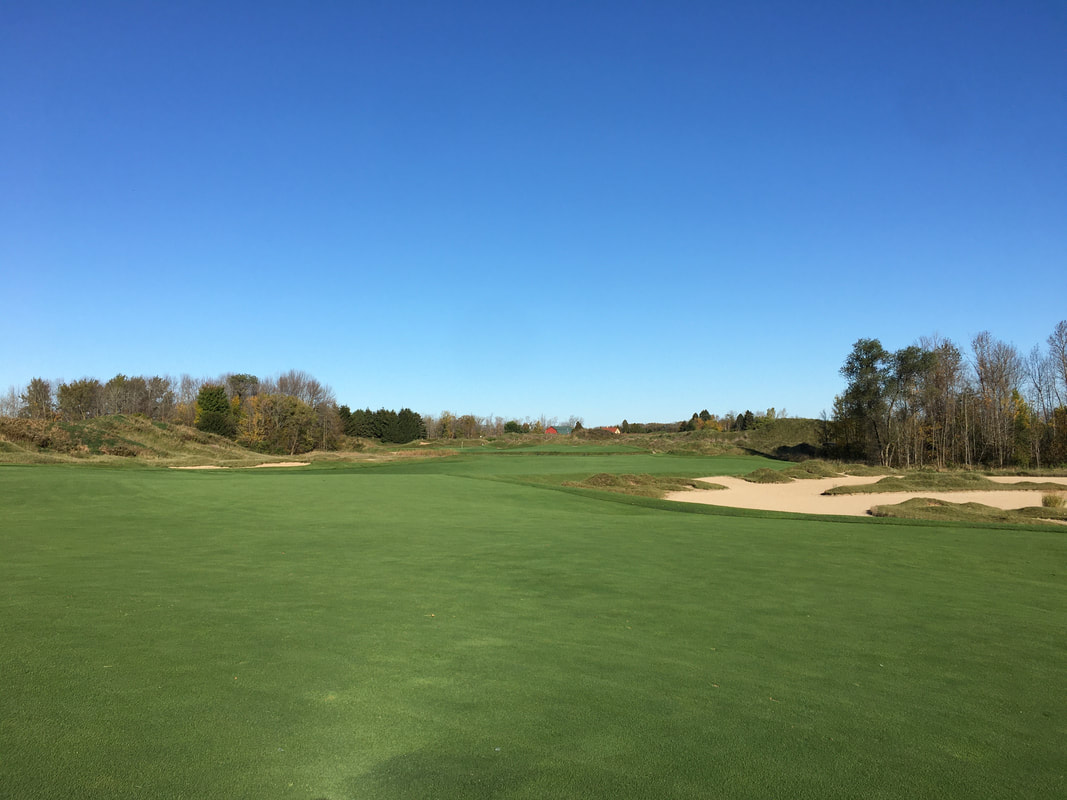
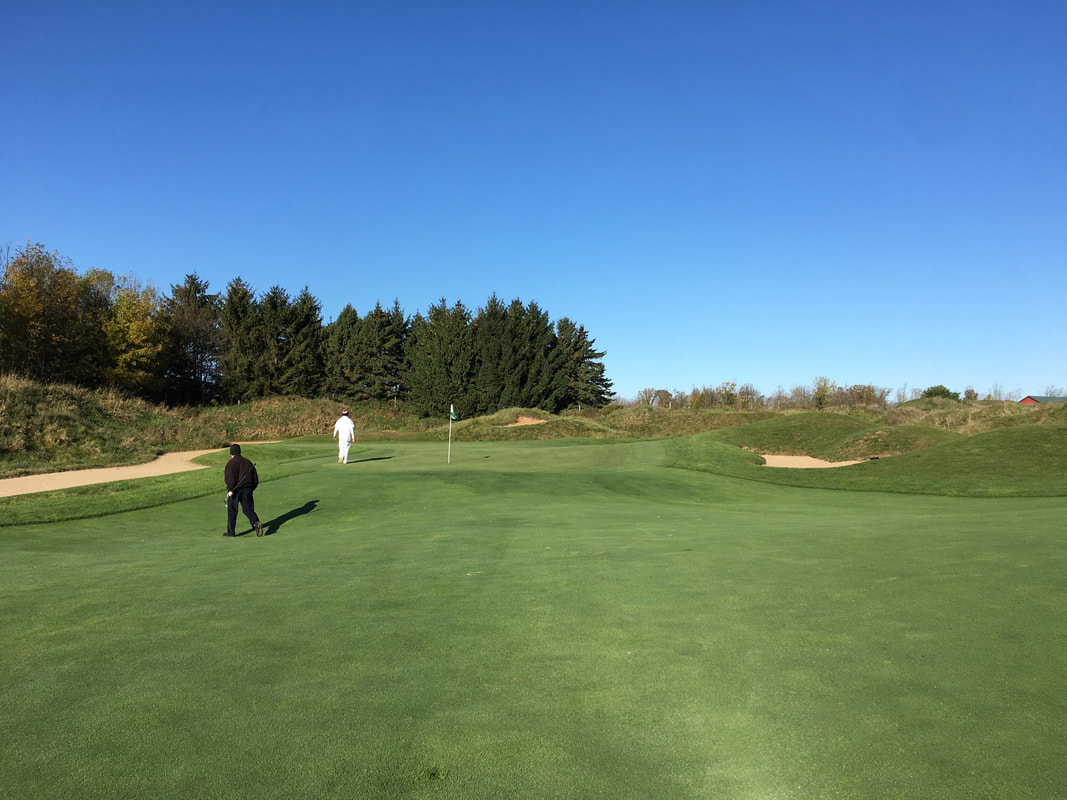
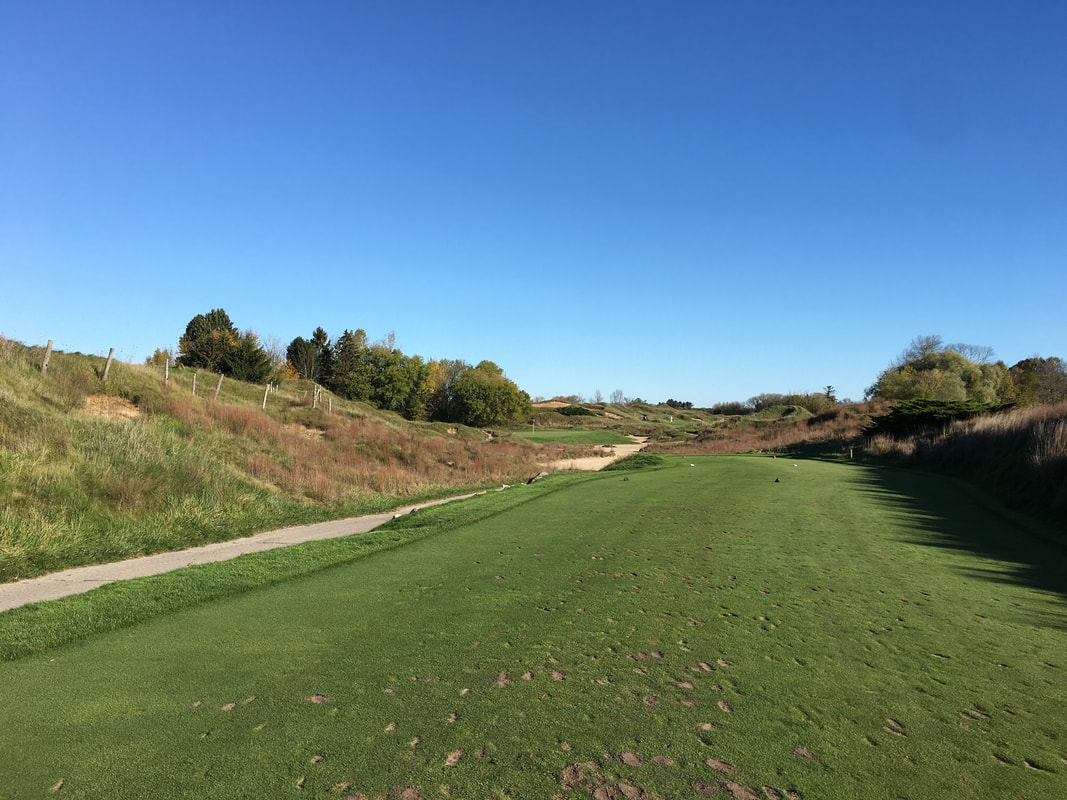
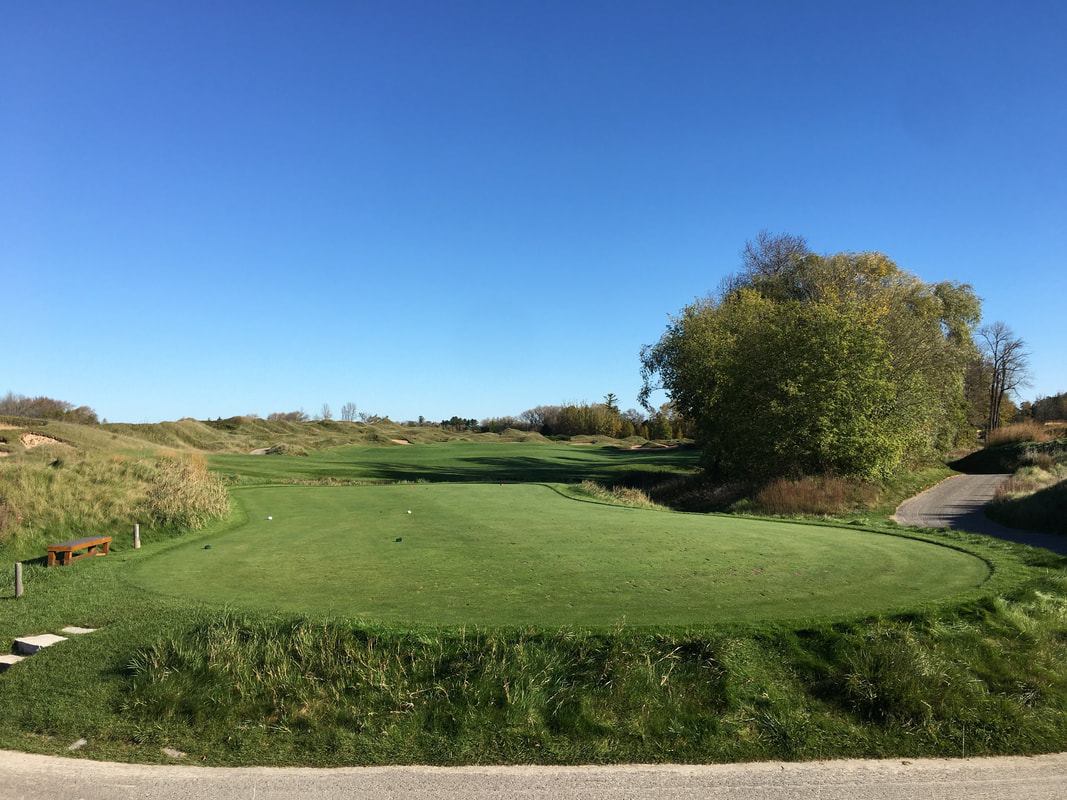
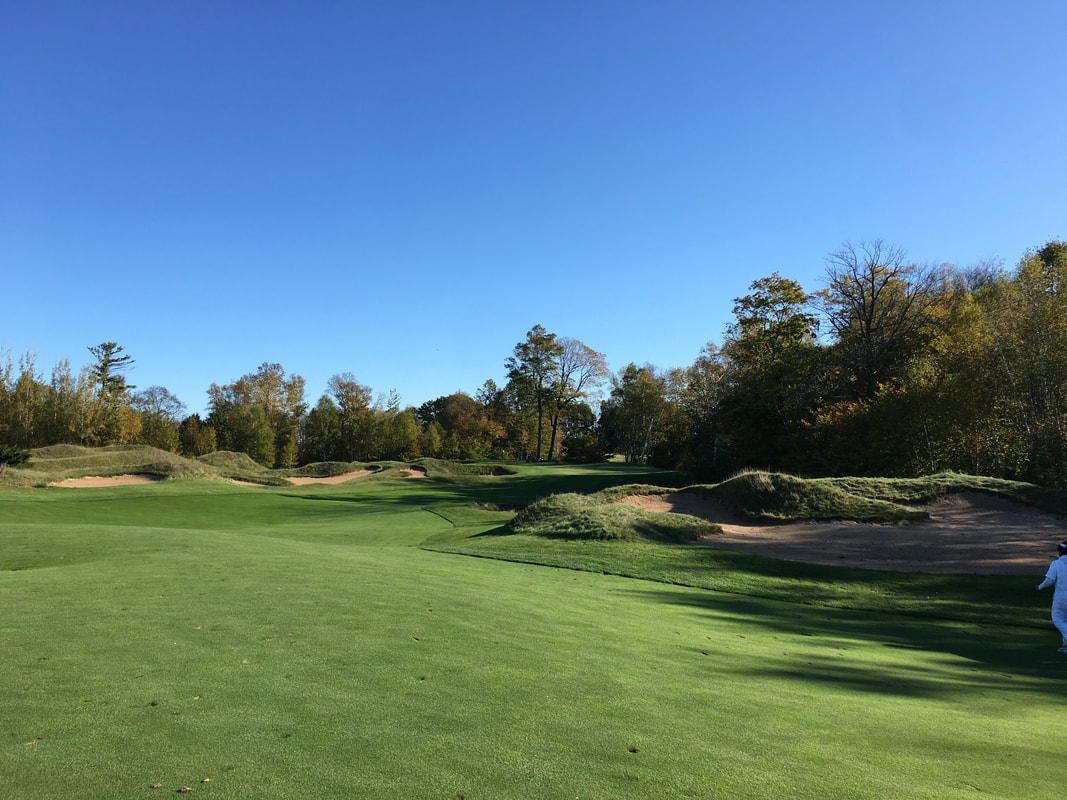
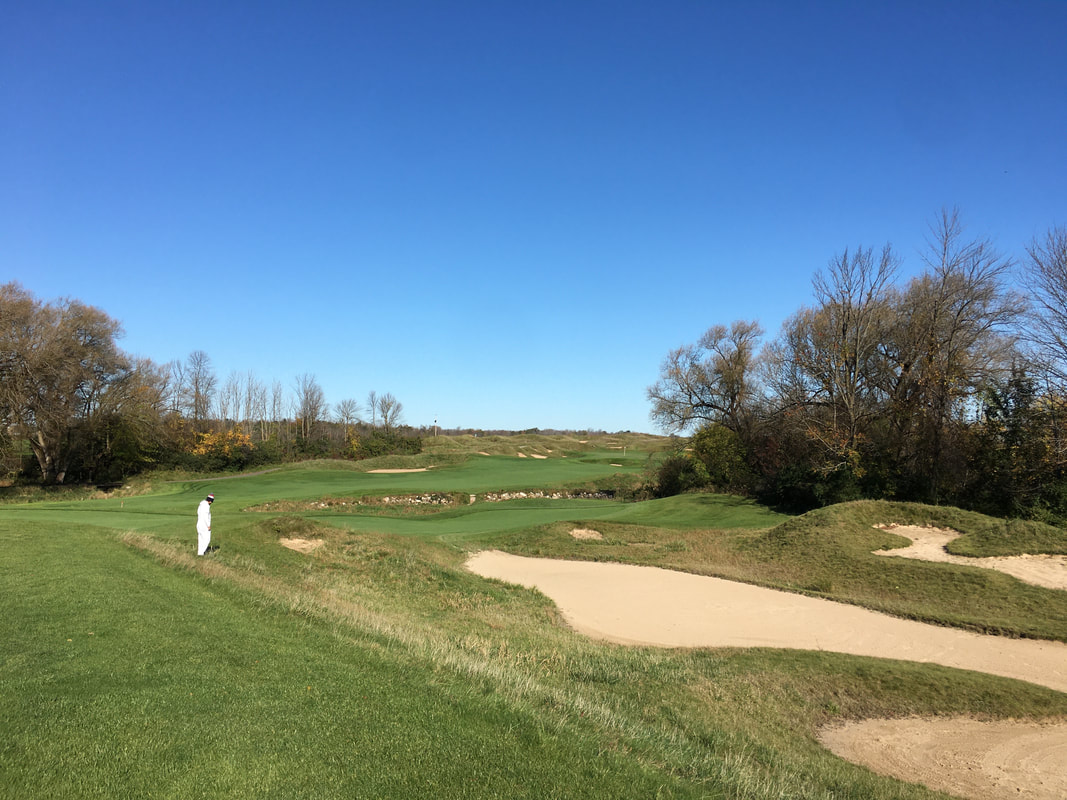
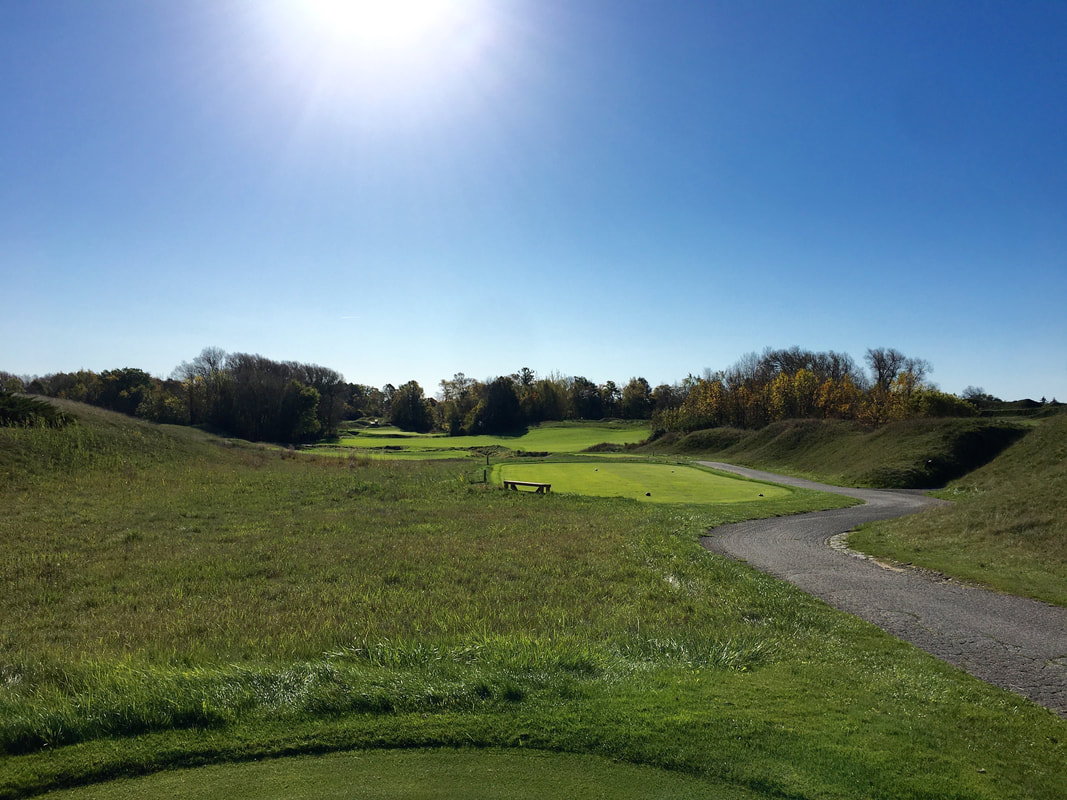
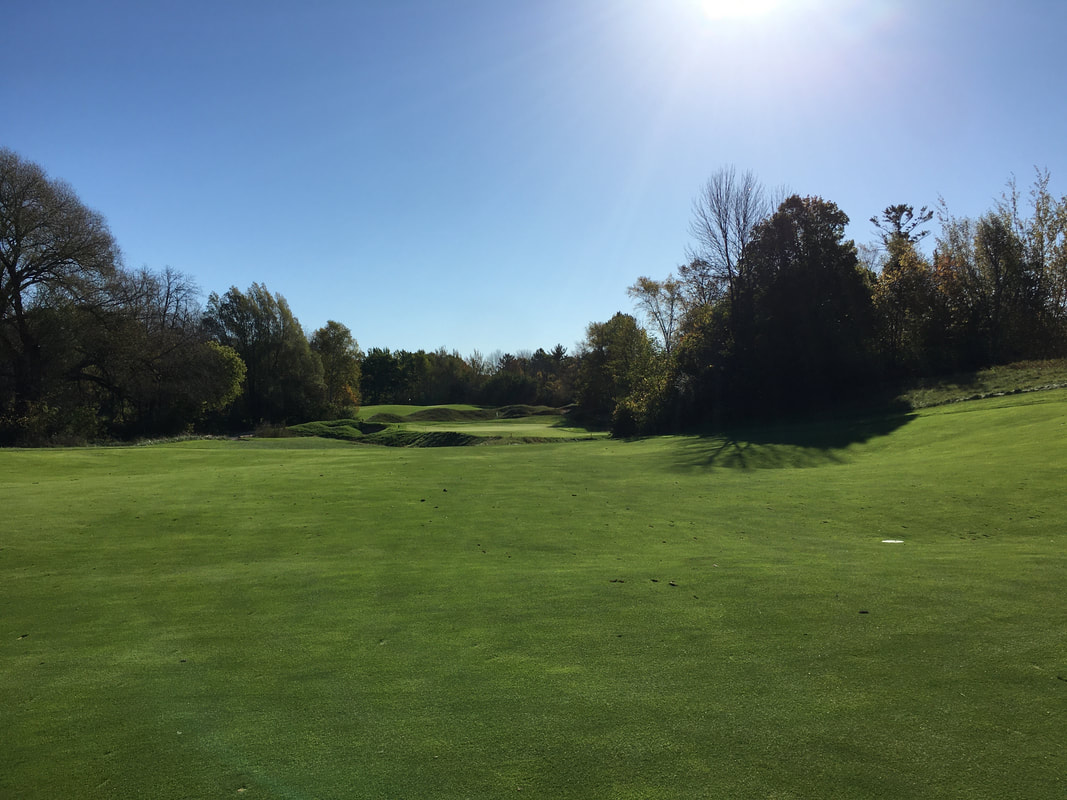
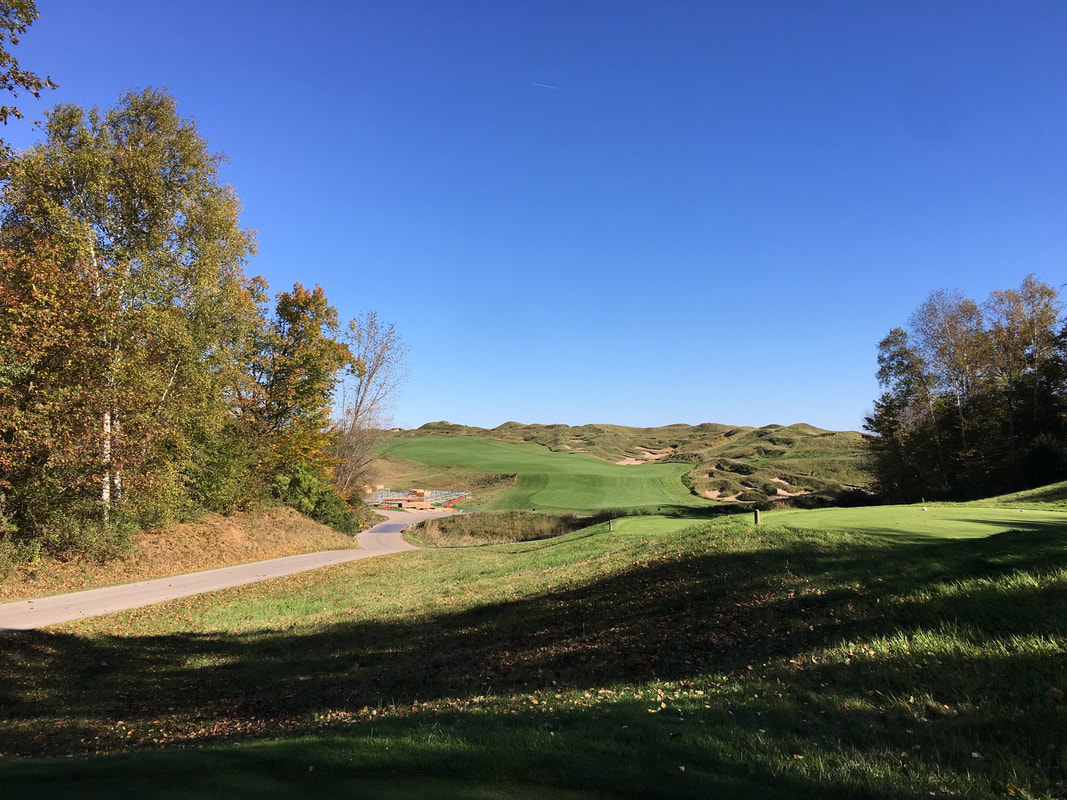

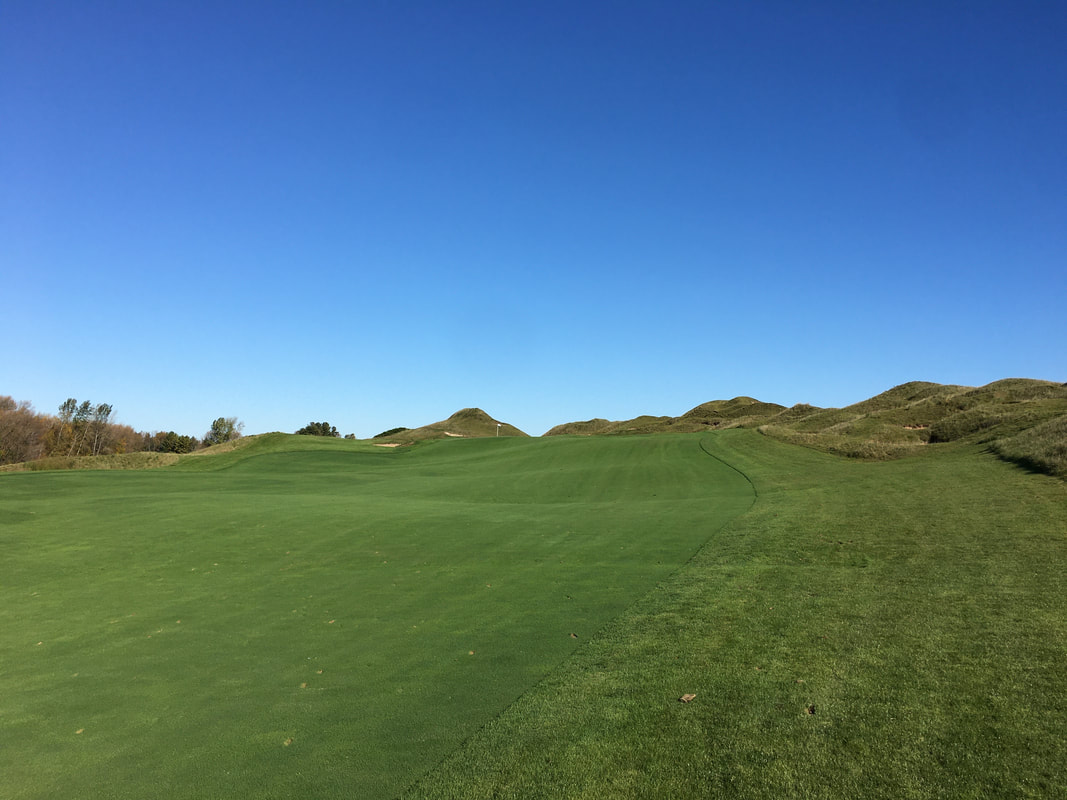
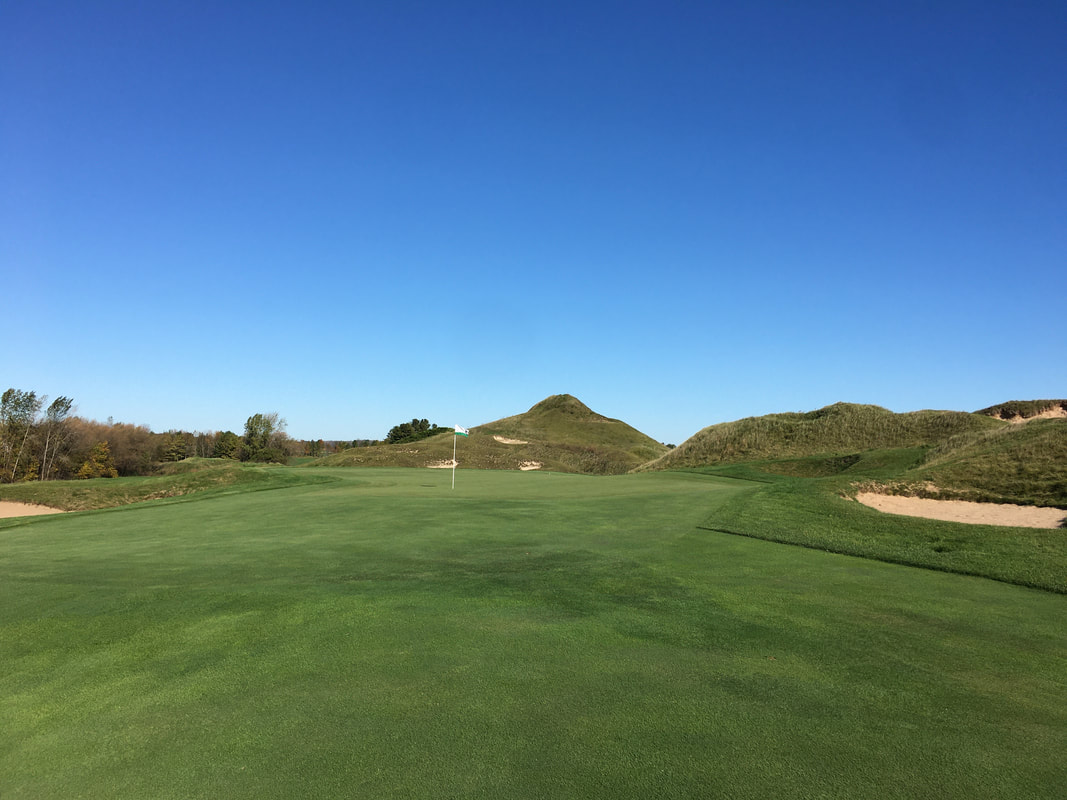
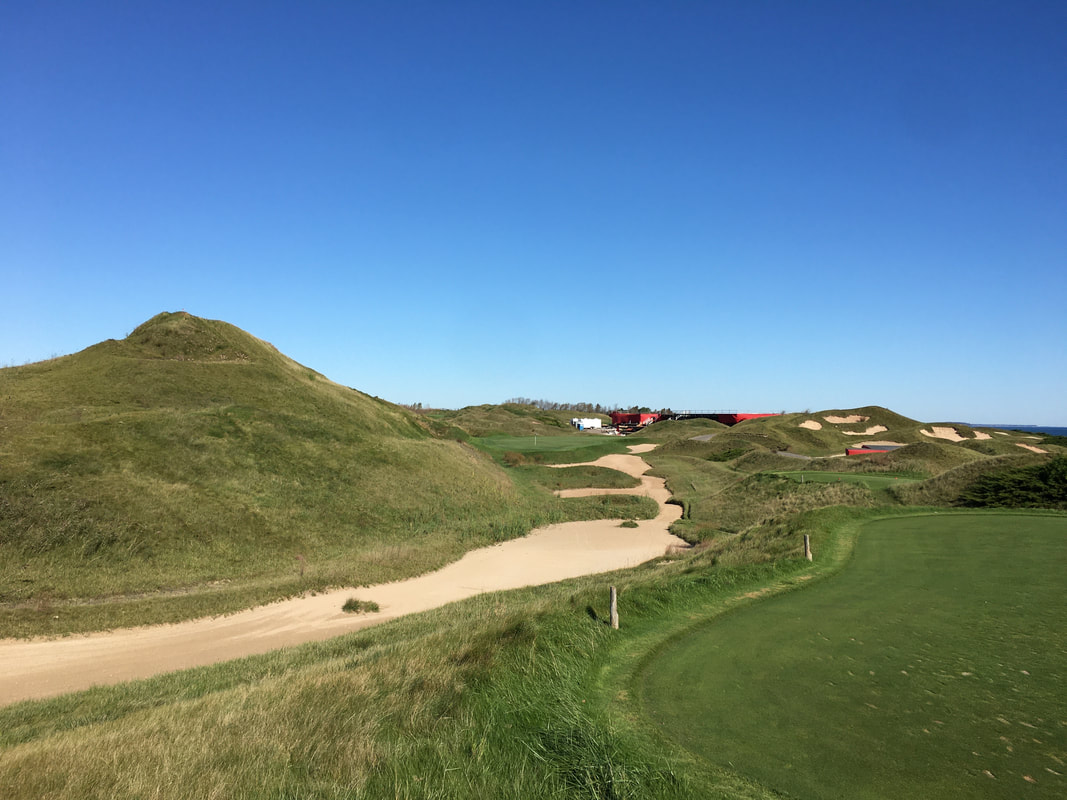
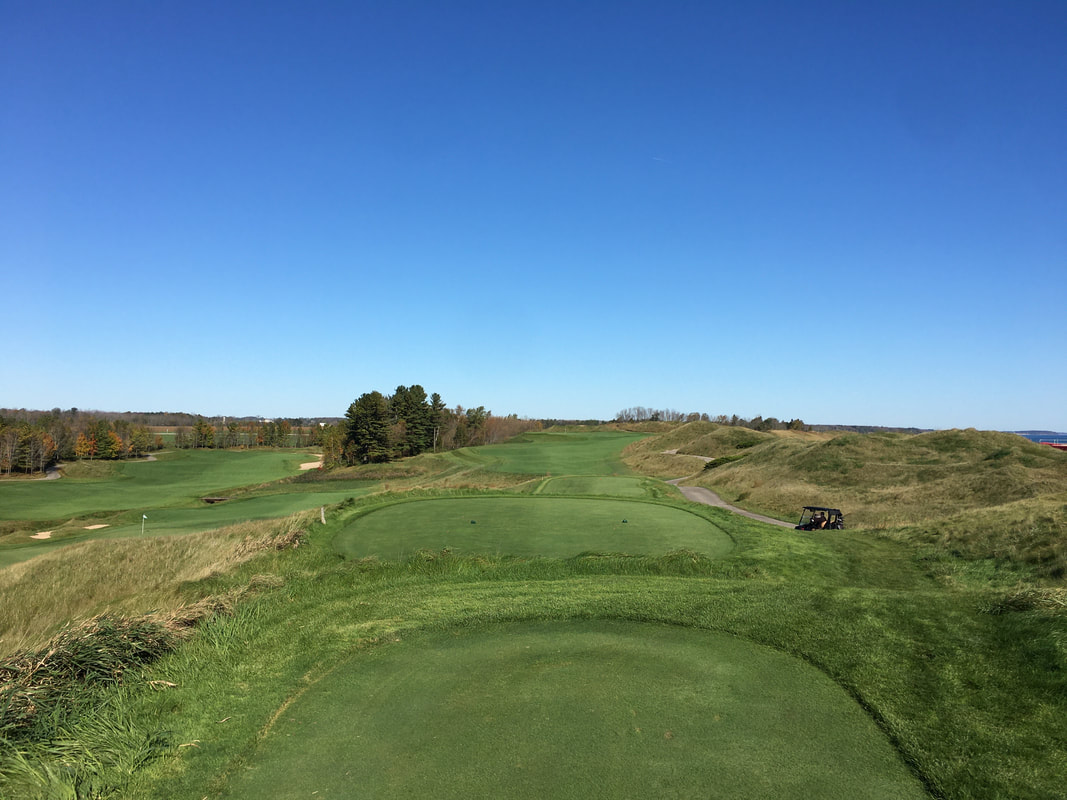
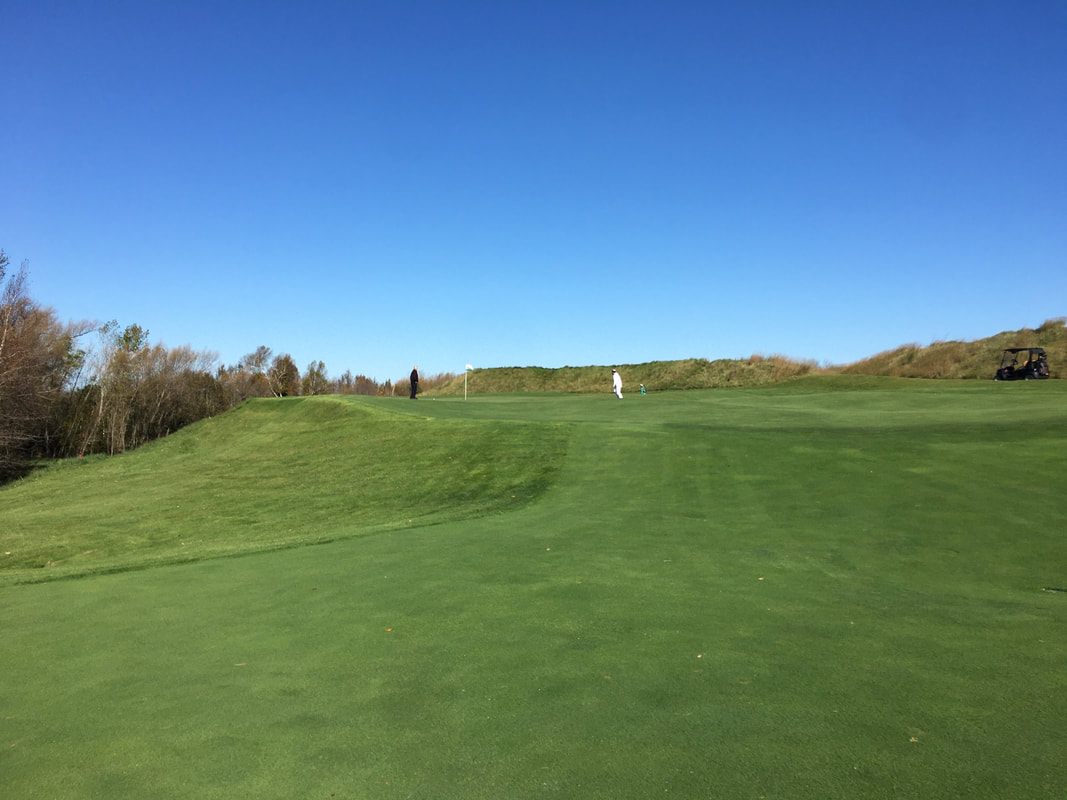
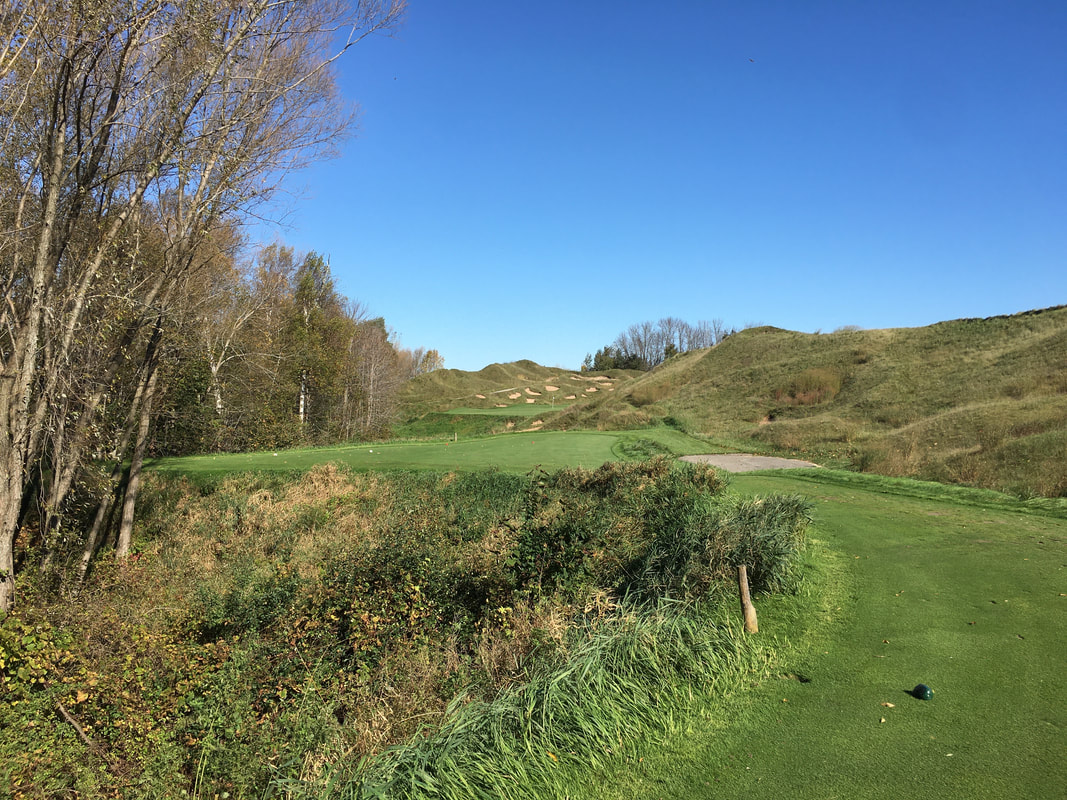
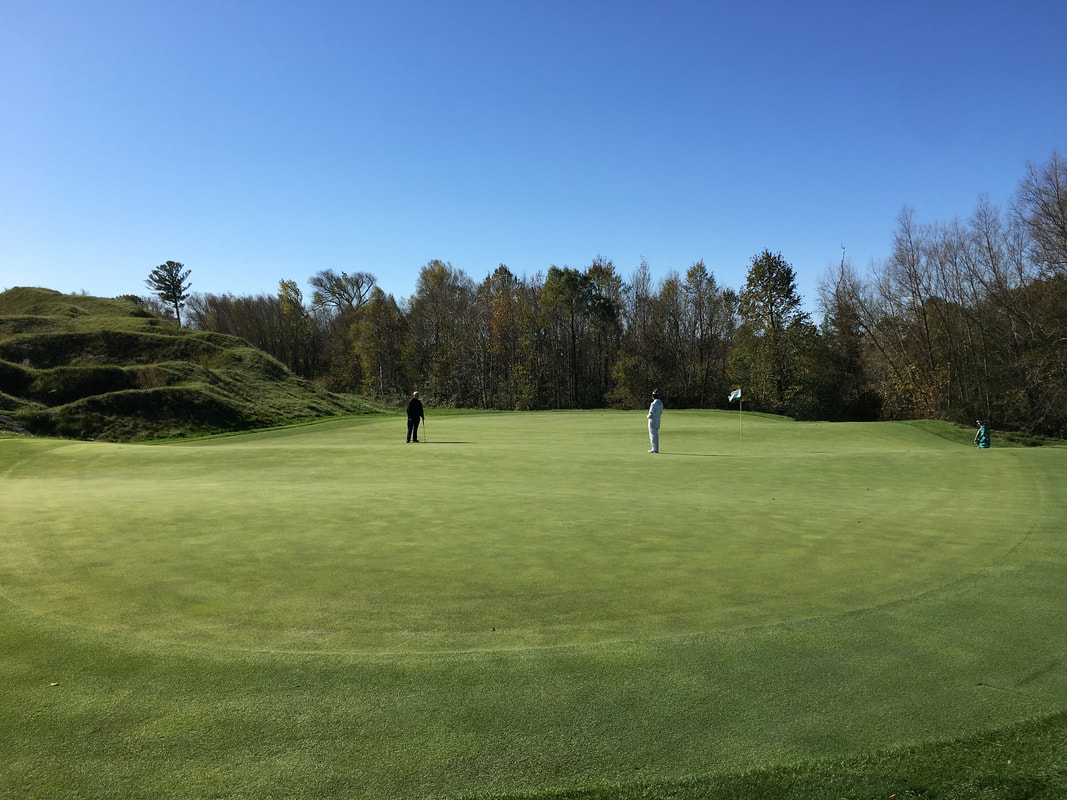
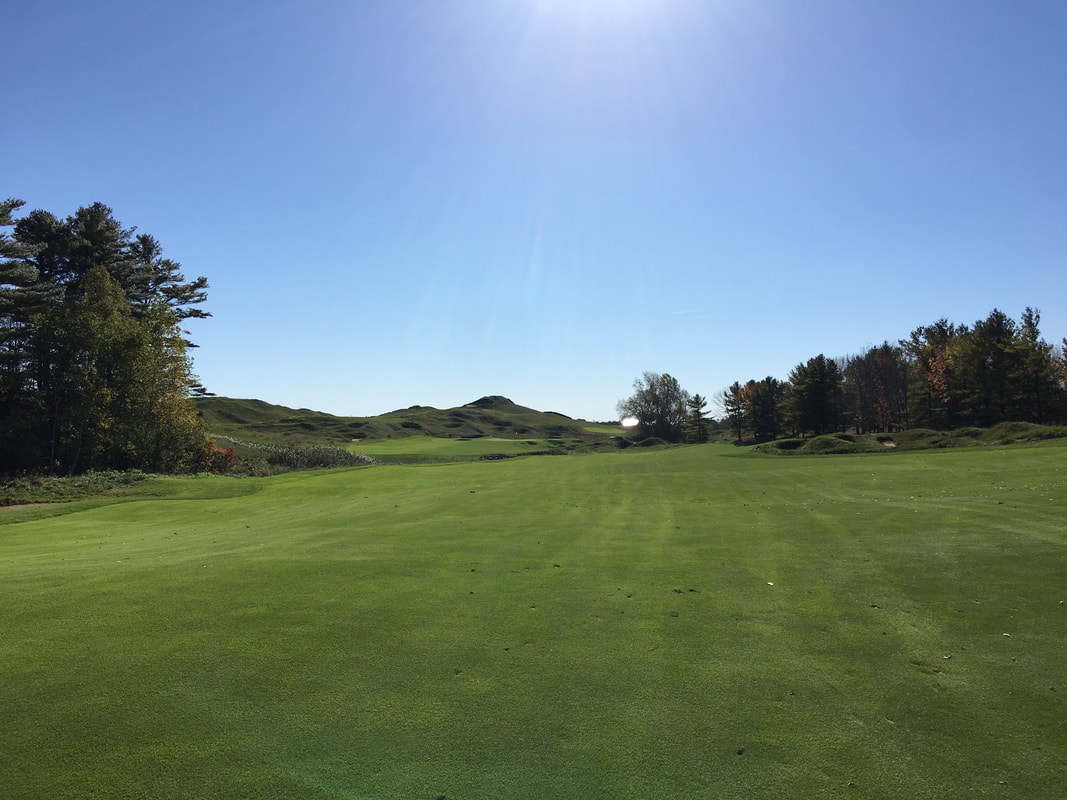

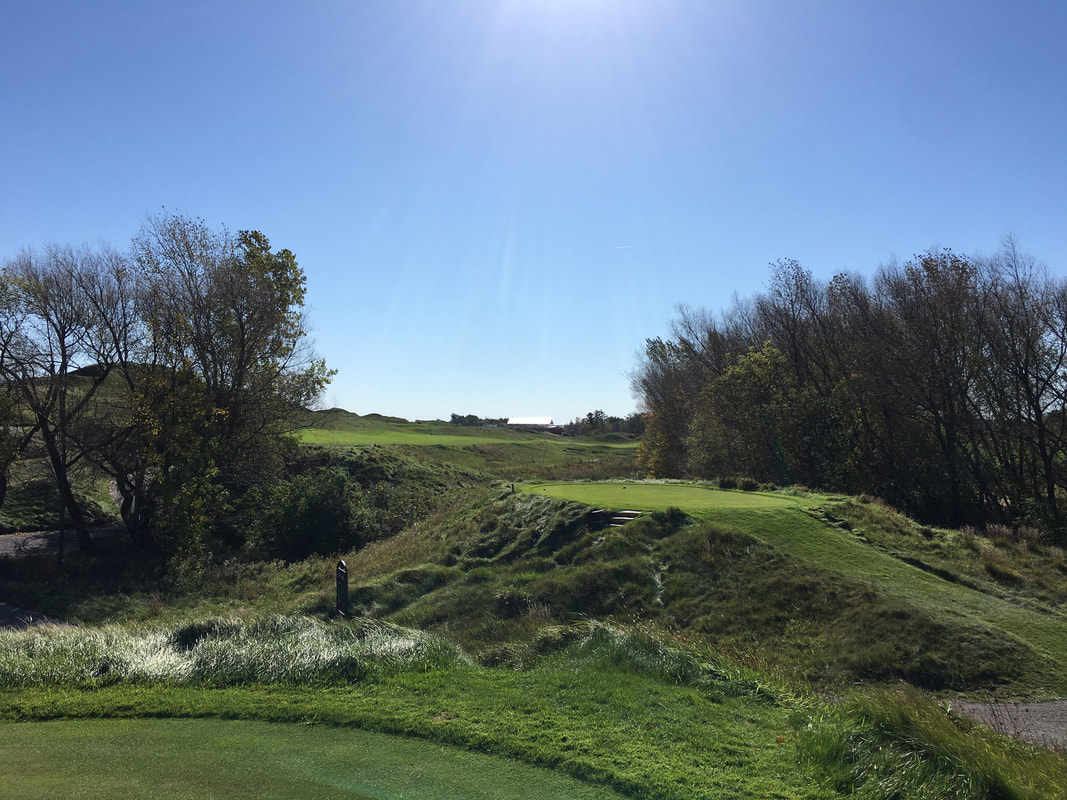
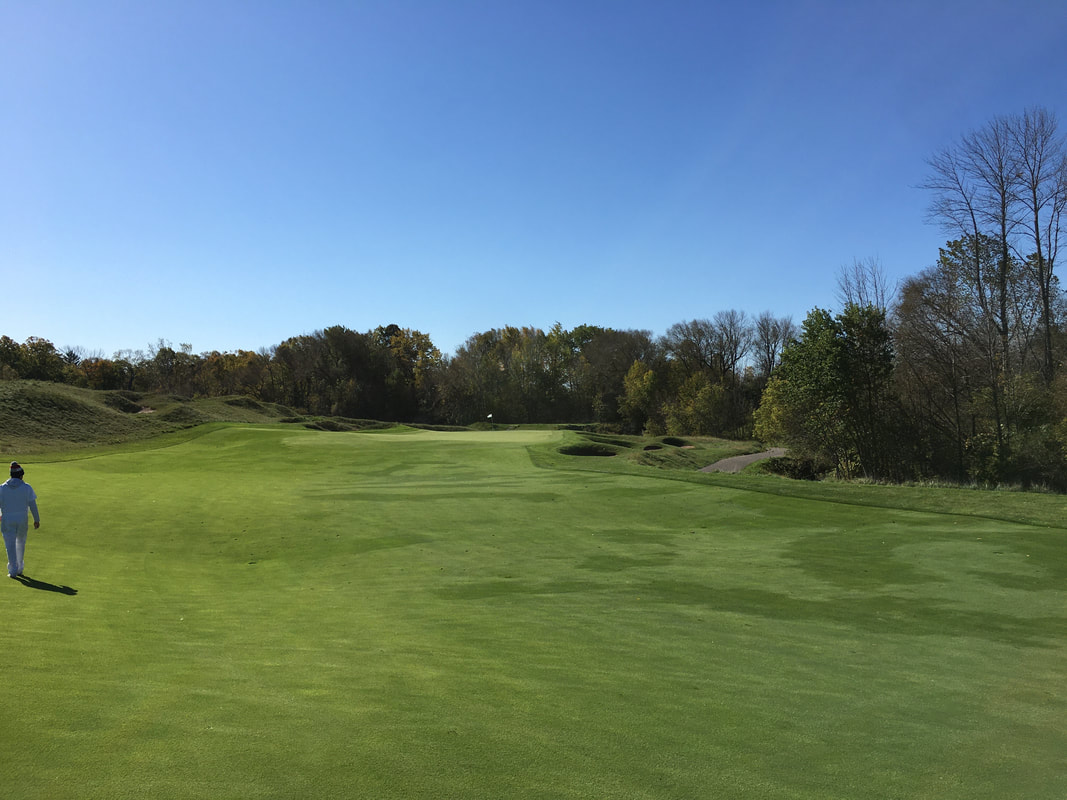
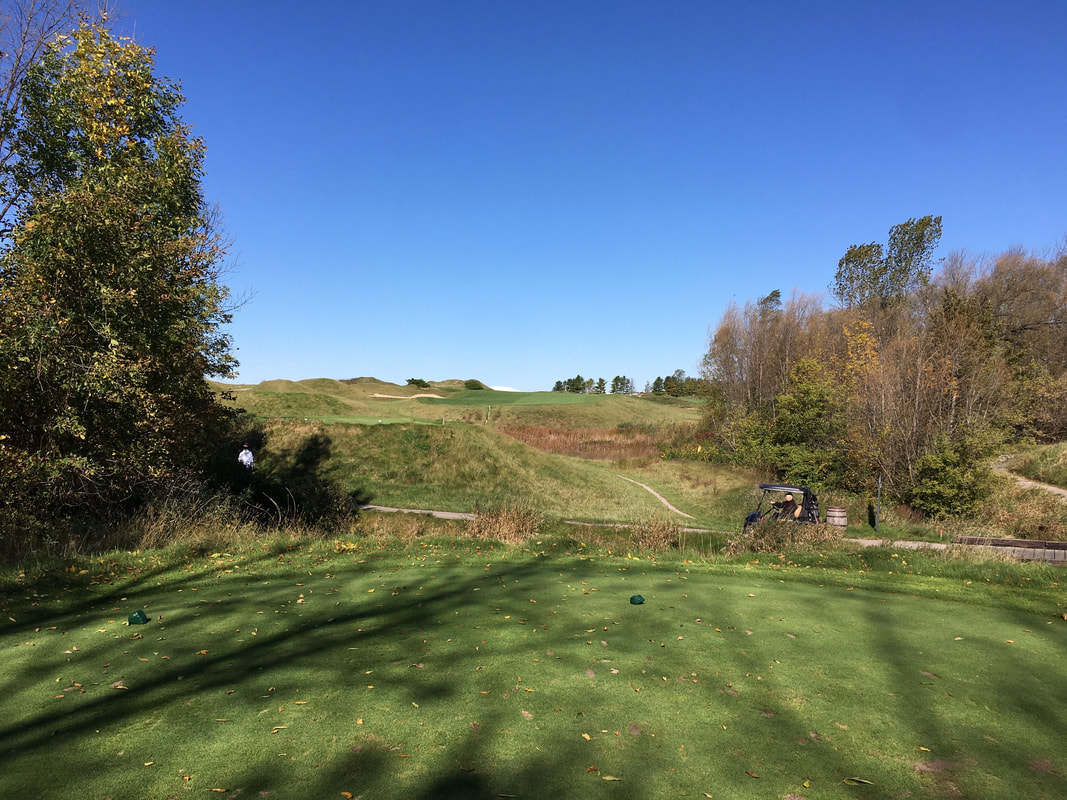
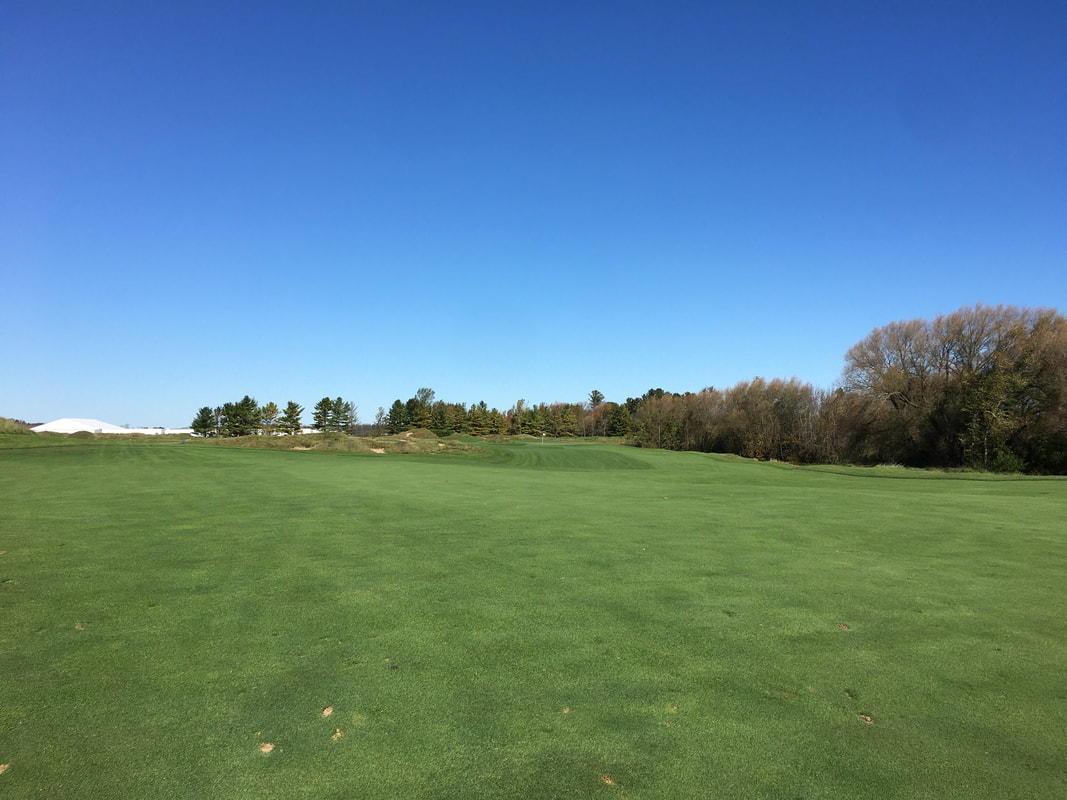
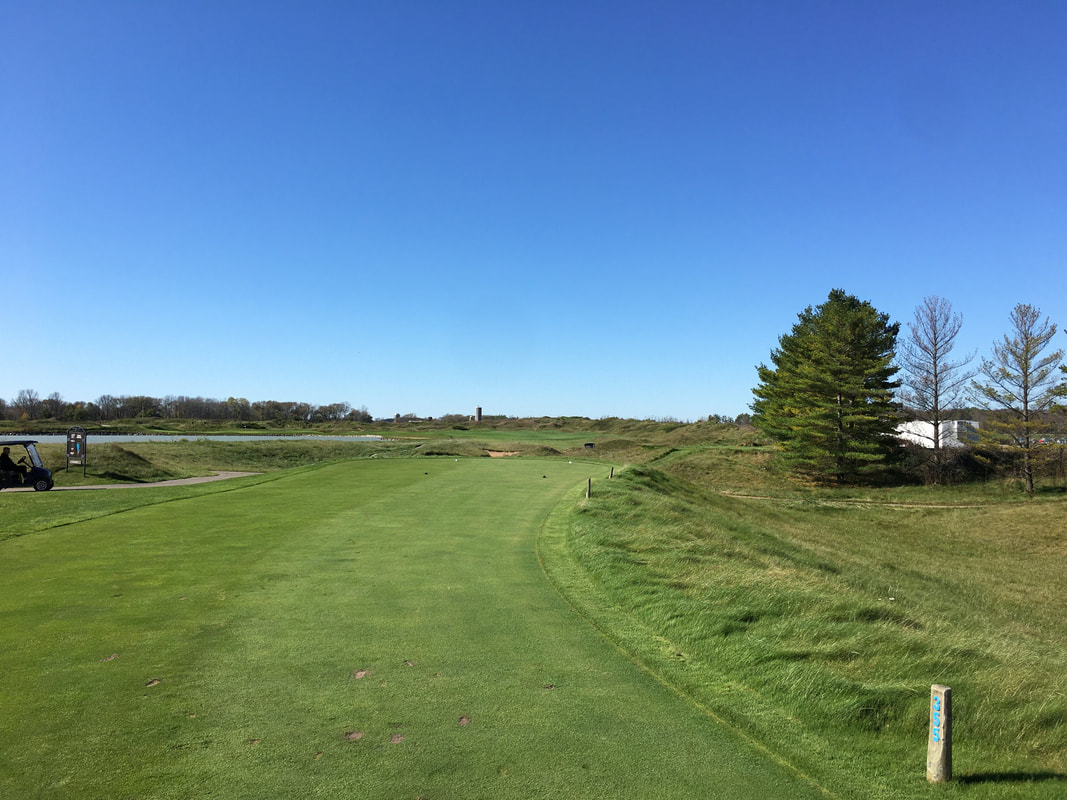
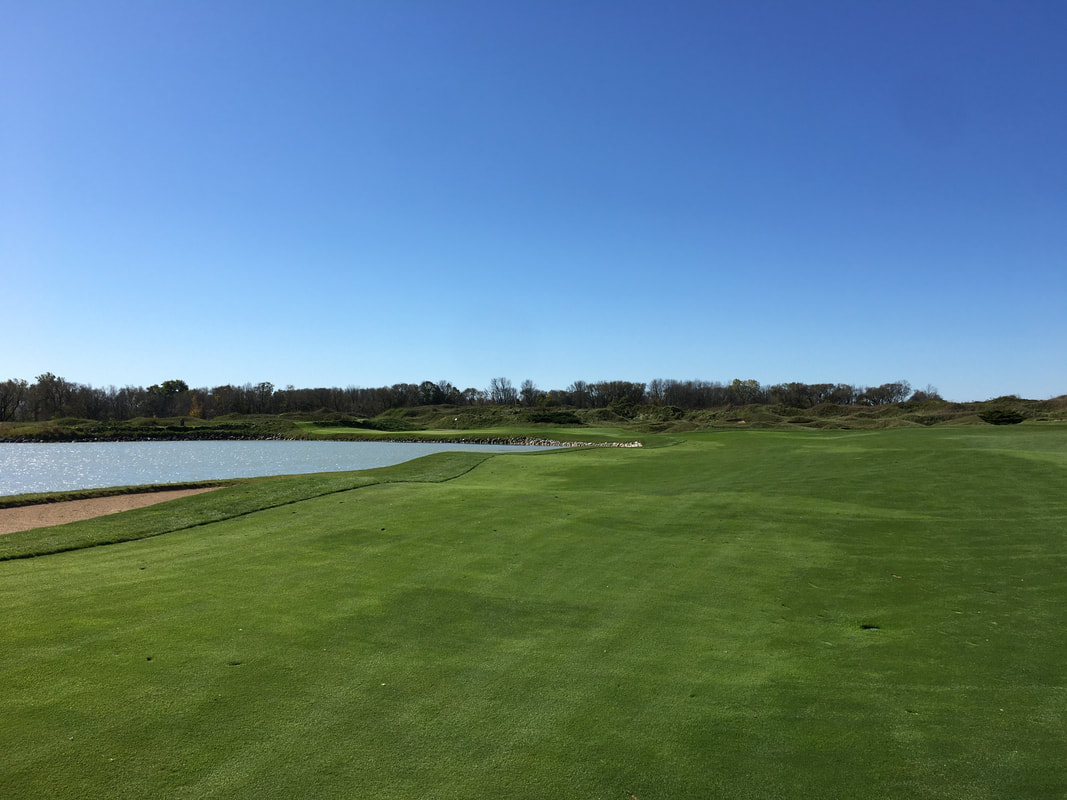
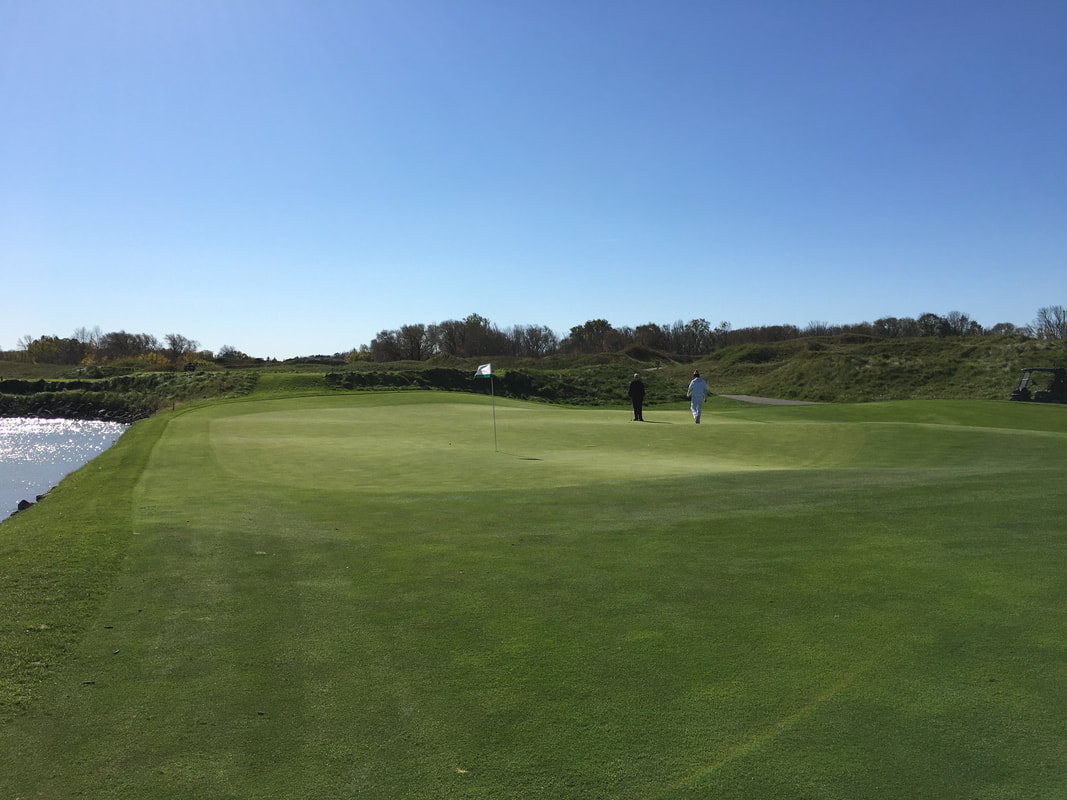
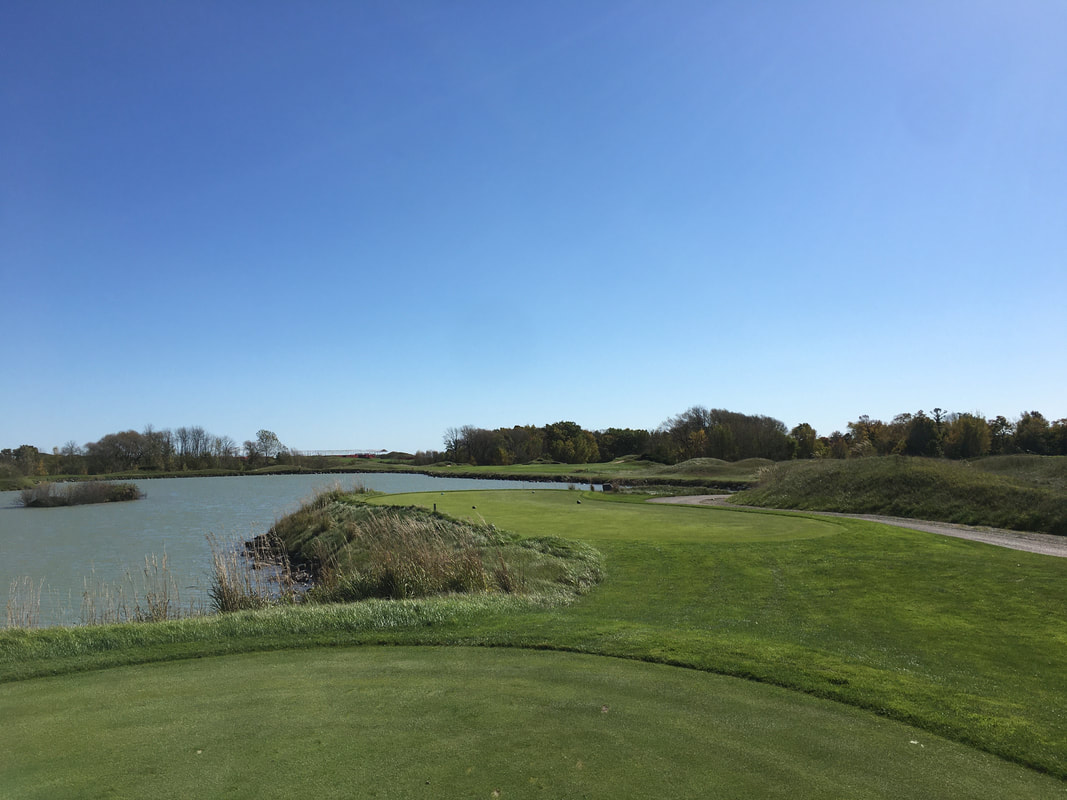
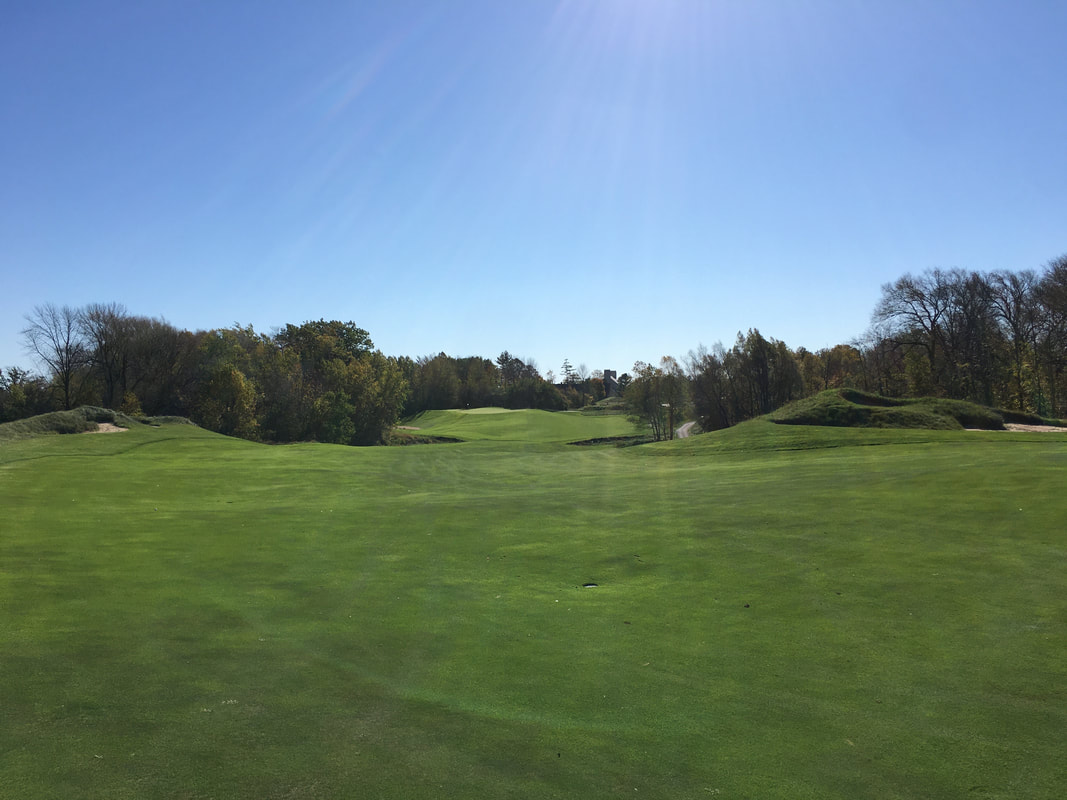
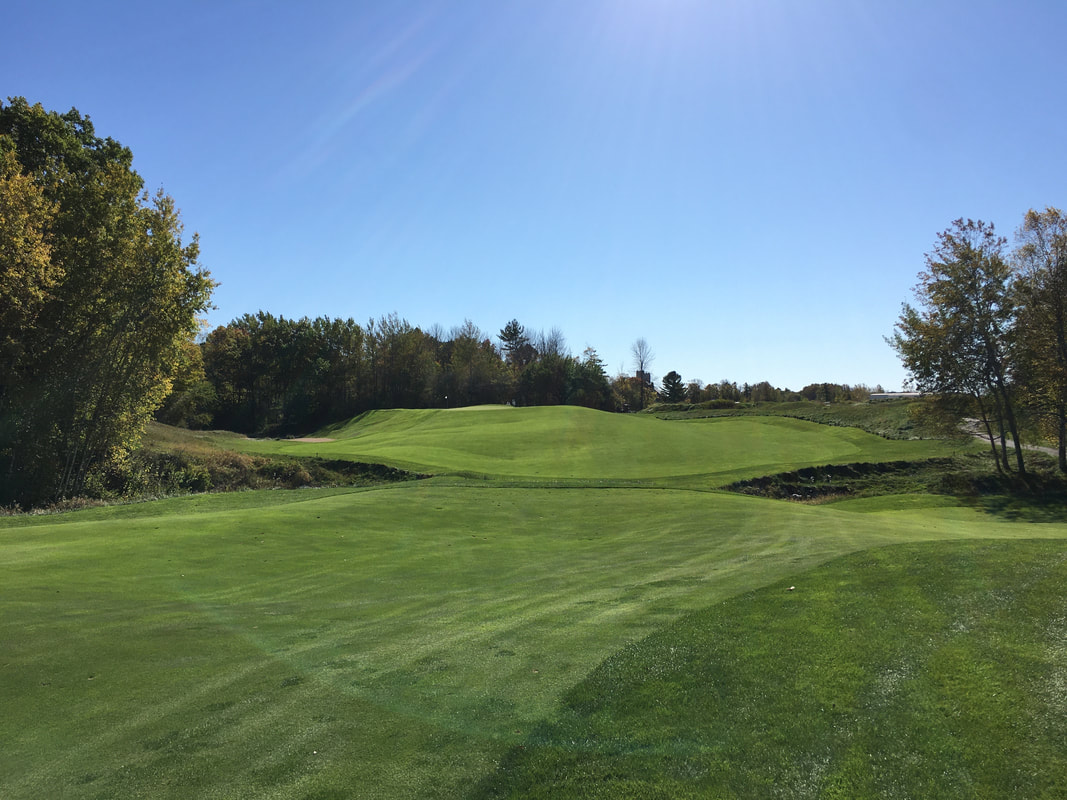
 RSS Feed
RSS Feed